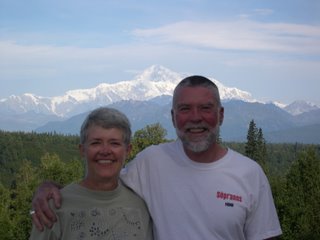OntarioThe Big Chute is the only marine railway in North America. Here boats are moved from the Severn
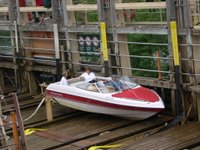
River to Gloucester Pool on the east side of Georgian Bay, part of Lake Huron. Originally built in 1917 and expanded in 1977, the chute lifts or lowers boats 58 ft. in a carriage which travels on rails, taking the place of a lock. When we were there, we were fortunate enough to see two small pleasure boats hauled up the rails into Gloucester Pool. The chute operates during the warm-weather months and, along with 20 locks, helps commercial and pleasure boats navigate the Trent-Severn Waterway from Lake Ontario to Lake Huron. Georgian Bay is frozen over several months of the winter.
In past travels we had seen Lake Michigan and Lake Superior, but this trip is our first time to spend time along Lakes Erie, Ontario and Huron. We sailed on the Island Princess Cruise out of Parry Sound on a three-hour trip to view many of the 30,000 islands in Georgian Bay. It was a beautiful and relaxing trip on a warm (not hot), partly sunny day. This is cottage country. Canadians don’t have mountain cabins, they have cottages on the lake and Ontario is filled with many more than Minnesota’s 10,000 lakes. The map is dotted with lakes, small and large.
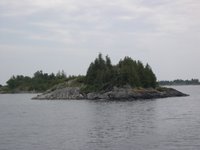
Apparently, many Canadians, especially those who live in the Toronto area (the largest metropolitan area in Canada) drive to Cottage Country along Georgian Bay most weekends of the summer. Some rent cottages, some own cottages on rented land, others own islands in the Bay. These islands today sell for $1 million and more. Some cottages have electricity, many use lanterns and propane to meet their energy needs. A fascinating look at life very different from what we know in Colorado.
That is really why we travel—to see what is different. In many ways, Canada is very like the US—divided highways, same language (they spell some things differently), same modern way of life. But speed limits are in kilometers per hour, distances in kilometers, gas is sold by the liter, and some highway signs are different—and almost non-existent on country roads. What are “collector” highways vs. express highways? We don’t know and it made navigating through Toronto on Sunday morning a real challenge, but we made it. We are spending a little over $4 a gallon for gas--$1.08 per liter. When we were in Canada two years ago, the cost was 97 cents a liter, so their costs haven’t increased as much as our since then.
Sometimes your way of life depends on what “hydro” means. If to hydrate yourself is to drink water and hydro electric power is created through the power of water, we thought a “hydro campsite” meant it had water as well as electricity. However, after we had parked the trailer and set up everything in Port Burwell Provincial Park, we learned hydro in Canada (or at least in Ontario) means electricity, not water. We had an electrical connection, but no water hook-up. And we hadn’t filled the tank before parking. So we spent two days dry camping, depending on a 5-gallon water jug. A test, but not bad once we adjusted to the concept. Washrooms and showers were nearby. We also learned that the electrical hookups have been positioned between two campsites, with no consideration for the distance to where a trailer would be parked. At Six Mile Lake we borrowed a 30-ft cord to add to our 25-ft cord; at Bronte Creek we moved to another campsite so our cord would reach. If everything were just like in Colorado, we wouldn’t have a reason to travel here.
We enjoyed visiting downtown Toronto with its old buildings converted to new uses, many new skyscrapers and beautiful gardens. We rode the GO train in from our campsite—a modern railroad that carries commuters and was mostly full at 9:30 am, as well. We visited the St. Lawrence Market, an old building now housing many shops, selling mainly specialty meats, cheeses and bakery goods. We walked to the Distillery District, where old distilleries have been converted to restaurants, art studios and elite shops. Downtown Toronto has many gardens and we saw several. Canadians who have very cold winters spend as much time outdoors during summer as possible and many office workers take their lunch to one of these gardens.

The next day we also visited the Royal Botanic Gardens in Burlington, west of Toronto, where we especially enjoyed the many day lilies and the rose garden. Lakeshore Drive along the edge of Lake Ontario took us by many beautiful homes and gave us lovely glimpses of the lake. It’s a great area, and home to the Canadian headquarters of Ford Motor Company, along with many other international concerns. Toronto is Canada’s financial capital—like New York City.
Ever since Ohio, we have seen orange day lilies growing wild along the roads. As we drove north to Georgian Bay, the highway medians were full of all sorts of wildflowers. Driving east toward Ottawa, the underlying granite often shows as cliffs or rocky slopes. It is a country of lush green forests, rolling hills, vibrant small towns. Every few turns in the road gave another view of a beautiful lake or river. Town names are based on the Huron or Mohawk native inhabitants, English towns or Irish or Polish heritage. Our last stop on Ontario is Ottawa, the Canadian capital.


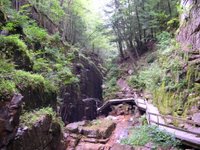

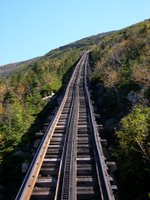
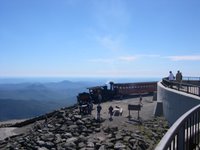












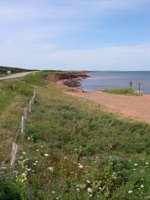
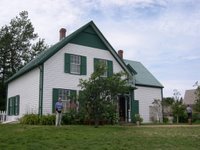






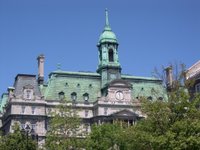
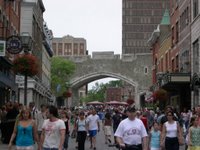
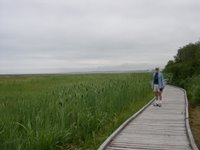
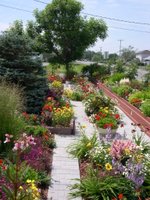





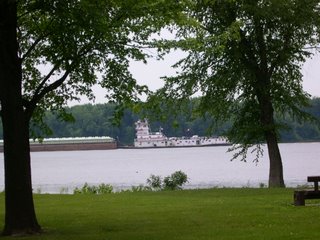


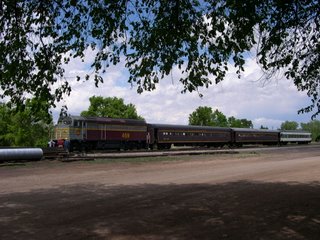
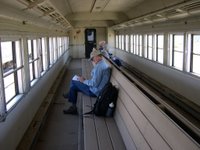
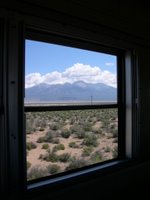


 Our 5th Wheel
Our 5th Wheel